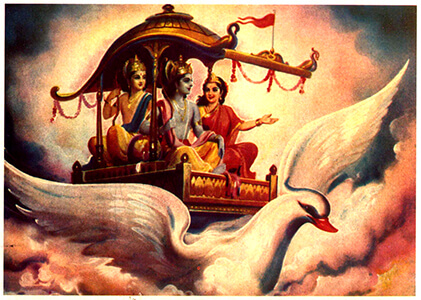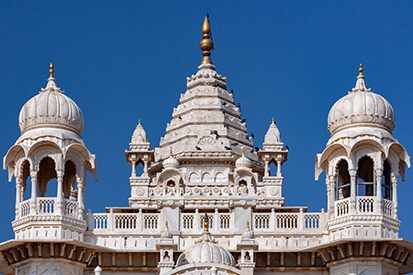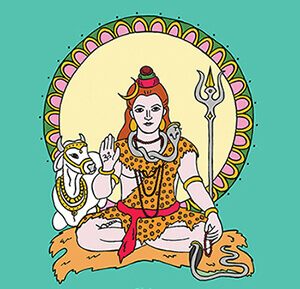Shiva the Liberator:
Hindu Deity of Freedom & Joy
hiva is part of the Hindu trinity that also includes Brahma and Vishnu. This aspect of God is the destroyer of evil, possibly akin to the Holy Spirit in the Christian trinity. Shiva is alternately depicted as benevolent and fearsome.
Shiva is associated with breath or air as well as fire. Shiva is often shown with a serpent around his neck, a crescent moon as an adornment, the river Ganges flowing from his hair, the trishula as his weapon, and a damaru drum nearby.
Share this page with a friend!
Shiva and the Chakras
As a fundamental energy in the universe, Shiva is associated with multiple chakras. Shiva is a powerful Hindu god manifesting throughout the cosmos. Shiva expresses freedom, liberation and joy. There are many forms of Shiva as well as many consorts.
Shiva and the Third Eye
Shiva is primarily associated with the third eye chakra between the eyebrows at the bridge of the nose. This sacred spot is sometimes marked on the forehead by the red dot known as the bindu. The third eye is the door to prophesy and spiritual vision. Learn more in the article Third Eye Chakra Meaning.
Shiva and the Throat Chakra
One of Shiva’s forms is known as Sadashiva. This combination of five major forms is associated with the throat chakra. In this form, Shiva is shown seated in a meditation posture. He can be identified by the leopard skin that he wears. More about this chakra can be found in Throat Chakra Meaning.
Shiva and the Sacral Chakra
One of Shiva’s consorts is Parvati, goddess of love, fertility and the home. Parvati is connected to the sacral chakra. Accordingly, Shiva also resides in this chakra in his primary form. Parvati and Shiva are the parents of the elephant-headed god Ganesha. Learn more about Ganesha Symbolism.

Shiva and Ancient Flying Machines
Shiva is often depicted flying on a large celestial eagle called Garuda. In fact, most of the gods of India are believed to have descended from the sky. These gods brought knowledge and new skills such as agriculture, mathematics, and so forth to their devotees. Since Shiva appeared as an adult, there are no stories or records of Shiva’s childhood. In contrast with this, Krishna is believed to have taken a human birth. Learn more in the article The Amazing History of Blue-Skinned Krishna.
Powers of Shiva’s Eagle Named Garuda
In addition to the eagle Garuda being large enough for Shiva to ride on him, he also had many other-worldly powers. For example, Garuda could fly to the moon. In addition, he could fly out of the solar system. Unfortunately, Garuda could also drop bombs. In fact, scholars including Eric Von Daniken (author of the New York Times bestseller Chariots of the Gods) believe that Garuda is a flying machine called a vimana, not a mythological animal. Vimana is Sanskrit for “boat of the air.”

Vimanas: Temples and Ancient Texts
Gods and kings used vimanas to travel across India, throughout the world, and to cities floating in the “firmament.” There are records of many types of vimanas with differing capabilities. The shapes of these vimanas are thought to be replicated in the tops of Hindu temples (see image above). There are extensive descriptions of various vimanas in Book 7 (Drona Parva) in the Mahabharata.
Electromagnetic Field of Vimanas
Riders are said to have circled vimanas multiple times before entering the crafts. Descriptions include details such as the hair of travelers standing on end when close to a vimana. Moving around the outside of the vimana would help to adapt the body to the electromagnetic field. To this day, devotees may circle a temple multiple times before entering.
Vimanas in the Ramayana
The king of Lanka named Ravanna possessed one of the most famous vimanas called the pushpak vimana. Ravanna is the king who kidnapped Sita, wife of Rama, in the epic story told in the Ramayana. This vimana is said to have traveled at the speed of thought. Some resources believed that many vimanas were powered by mercury.
Vimanas in the Mahabharata
In the famous epic the Mahabharata, there are detailed descriptions of the impact of weapons released by ancient flying machines. For example, the elephants and other animals were dying. Birds were falling out of the sky due to heat and radiation. Unborn children were killed by the “rays of the gods.” Soldiers wearing metal armor had to remove their protective gear due to the sudden heat generated.
Characteristics of Vimanas
Smaller vimanas are referred to as flying chariots. Some say certain vimanas could also travel under water. Larger vimanas could fly great distances and destroy entire cities with a single weapon. Many of these vimanas also traveled to floating palaces or cities. According to some researchers, these cities were actually motherships. The vimanas were more like shuttles between the earth and larger ships.
Arjuna and the Three Cities
Arjuna, the personage discussing morality and the universe with Krishna in the Mahabharata, says that there were three cities in the firmament. Arjuna went many times to these cities. Two were destroyed and the other disappeared.
Types of Vimanas
Smaller vimanas could only transport two or three people. Larger vimanas could hold anything from 20 to 500 passengers. Some had wheels; others did not. Some made a thunderous noise when they traveled. Other vimanas moved silently. In addition to those powered by mercury, others were thought to run on mica and other components.

Other Forms and Mantras to Shiva
Another form of Shiva is called Sadashiva. Sadashiva is the highest form of Shiva, a compilation of five major aspects. Sometimes Sadashiva is depicted with five faces representing five emanations of God or the four directions plus upward movement. Other sources view Sadashiva’s five faces as symbolizing the forces of the universe: creation, preservation, destruction, obscuration and grace.
Symbols of Sadashiva
Sadashiva wears a tiger skin indicating his victory over animal instincts. The snake around his neck represents the endless cycle of birth and death. The trishula held in one hand is a three-in-one symbol representing the divine as a trinity.
Watch nearly 400 videos on the Vocal Medicine Channel!
Mantra of Praise to Shiva
This is a chant to Nataraja that simply means, “Praise to Nataraja, the royal Shiva, who is beautiful.” Lyrics: “Nataraja, Shivaraja, Sundara.” Shiva is often viewed as “the destroyer.” Likewise, Krishna or Vishnu is “the Preserver” and Brahma is “the Creator.” This Trinity alternately creates, preserves and destroys physical manifestation in the universe.
There are experts who view the ancient Vedas as scientific texts describing the processes of creation and destruction from a physics perspective. Each vowel and consonant in Sanskrit is said to carry a particular vibration and to create a specific form in the material world. Learn more in the article One Word Mantras.
Shiva’s Power to Clear Energy
Author Kathleen Karlsen
Kathleen Karlsen is a musician, artist, writer and speaker. She is the author of two books (Flower Symbols and Vocal Medicine) and over 200 articles. Kathleen, her husband Andrew, and their five children live in Bozeman, Montana. More about Kathleen Karlsen.
Shiva Mantra Article Summary
Shiva is a Hindu deity associated with breath or space. He is a powerful Hindu god manifesting throughout the cosmos. Shiva expresses freedom, liberation and joy. Shiva has many forms and names as well as many consorts. Shiva travels throughout space on an eagle named Garuda. Learn more about the forms of Shiva.




